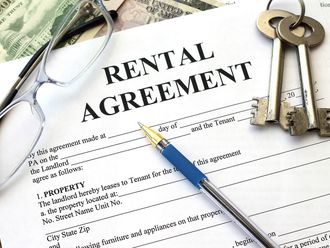Washington: Shaun Donovan, secretary of the US Department of Housing and Urban Development, stood in the beating sun amid the scrapyards and vacant lots of Cleveland’s East Side and noted that rising home prices have begun to reduce the number of families whose mortgages exceed the value of their homes.
The ranks of underwater borrowers nationwide dropped by 700,000 in the first quarter of the year, Donovan told a crowd gathered for a news conference last week in a parking lot outside a housing-counselling centre. Still, he acknowledged, the problem remains severe in regions like greater Cleveland, where a third of homeowners have negative equity, according to data provider CoreLogic Inc.
“There is still a ways to go to make sure that hard-hit communities like Cleveland can fully recover, but we are on the right path,” Donovan said. “We have to do more.”
Even as home prices begin to stabilize in many areas of the US and mortgage delinquencies drop to the lowest level in three years, the administration of President Barack Obama faces an uphill battle to find solutions for keeping the nation’s 11.4 million underwater homes from turning into foreclosures.
The situation is particularly difficult in Cleveland, which saw 14 straight years of rising foreclosures before levelling off in 2010. Home values have dropped by 30 percent on the East Side since 2009 alone, according to the county assessor.
Anthony Brancatelli, a Cleveland city councilman who represents some of the neighbourhoods wiped out by home seizures, said he worries about the many “ghost” owners who have simply given up and disappeared.
“We’ve got to figure out a way to keep people in their homes no matter what,” Brancatelli said as he watched the HUD secretary speak July 30.
Donovan, the public face of the administration on housing issues, plugged a package of Senate bills that would expand opportunities for troubled borrowers to save money by refinancing their mortgages into lower interest rates.
The signature federal refinancing effort, the Home Affordable Refinancing Program, has helped about 150,000 borrowers with negative equity obtain lower interest rates and lower monthly payments since the beginning of the year, according to data released Tuesday by the Federal Housing Finance Agency.
Still, Cleveland housing activists said refinancing programs and even mortgage modifications may mean little to many homeowners who are so far underwater that it may take decades for them to get ahead. Homeowners are dismayed that they still owe the full amount of the original loan when their homes may be worth just half that much now.
“Why would anyone consider it reasonable to stay in a house you’re going to be paying 30 years on, and maybe longer if the neighbourhood deteriorates more, before you see any equity?” Paul Bellamy, research director at Empowering and Strengthening Ohio’s People, an organization that assists homeowners, said in an interview.
The administration was pinning its hopes for helping those deepest underwater on Edward J. DeMarco, acting director of the Federal Housing Finance Agency, which regulates Fannie Mae and Freddie Mac. The Treasury department offered to cover a portion of the cost if FHFA would allow the two government-sponsored enterprises to cut the debt on loans they own or guarantee.
DeMarco last week rejected the administration’s offer.
The FHFA said it would only make financial sense to write down loans if the debt reductions convinced most borrowers who hadn’t made mortgage payments in more than a year to suddenly start paying again. The agency made it clear it considered that highly unlikely and suggested that the best solution was a “graceful exit” from homeownership for those borrowers.
Donovan, whose agency is trying to keep neighbourhoods from being swamped with vacant houses, is looking for additional solutions.
In an interview as he travelled between appointments in Cleveland, Donovan noted that there’s already been some success: Principal reduction is increasingly common in modifications of loans that aren’t backed by Fannie Mae and Freddie Mac, a fact that he attributed in part to the $25 billion settlement between large loan servicers and federal and state officials.
The settlement requires servicers including Bank of America Corp, JPMorgan Chase & Co. and Wells Fargo & Co. to spend at least $10 billion of the money cutting principal balances.
About 10.2 percent of loan modifications in the first quarter of 2012 included principal reductions, up from 2.8 percent a year earlier, according to the OCC.
“We’ve been able to move the needle to make change,” Donovan said. “That’s going to have a big impact for those who are struggling to pay their bills.”
Early signs suggest that those efforts might be coming too late for some of the most troubled borrowers. Bank of America reported last month that it got no response from more than half of the 60,000 homeowners it has contacted offering writedowns of as much as $150,000.
There are other signs that aid isn’t reaching the most vulnerable borrowers. Overall, modifications of mortgage terms to make loan payments more affordable for delinquent homeowners were down by nearly 37 percent in the first quarter of 2012 compared to last year, according to the Office of the Comptroller of the Currency.
Of $22 billion in federal money allocated for lender incentive payments under the Home Affordable Modification Program, only $3 billion has been spent so far.
Some of the slowing may reflect good news: The nascent housing recovery pushed the loan delinquency rate to 11.1 percent, the lowest level in three years, according to the OCC. Still, the agency said in a recent report, much of the drop in loan modifications may be happening “as servicers exhaust alternatives to assist delinquent borrowers who have not already been assisted.”
Unspent Funds
Meanwhile, the Obama administration also is now looking at ways to encourage the use of unspent federal housing funds to get around the FHFA’s objections to cutting principal balances.
California and Nevada are about to begin cutting debt on loans backed by the government-sponsored enterprises using their allocations from the Hardest Hit Fund, a $7.6 billion aid program for families in states with the largest home-price declines. Of that amount, only $351 million had been spent to assist 43,580 homeowners by the end of June, according to a recent audit.
Unlike the plan rejected by FHFA, which offered Fannie Mae and Freddie Mac up to 63 cents for each dollar of principal reduction, the California and Nevada programs will cover 100 percent of the potential costs to the government-sponsored enterprises. The regulator has approved those plans.
Analysts say other states might be able to follow suit.











